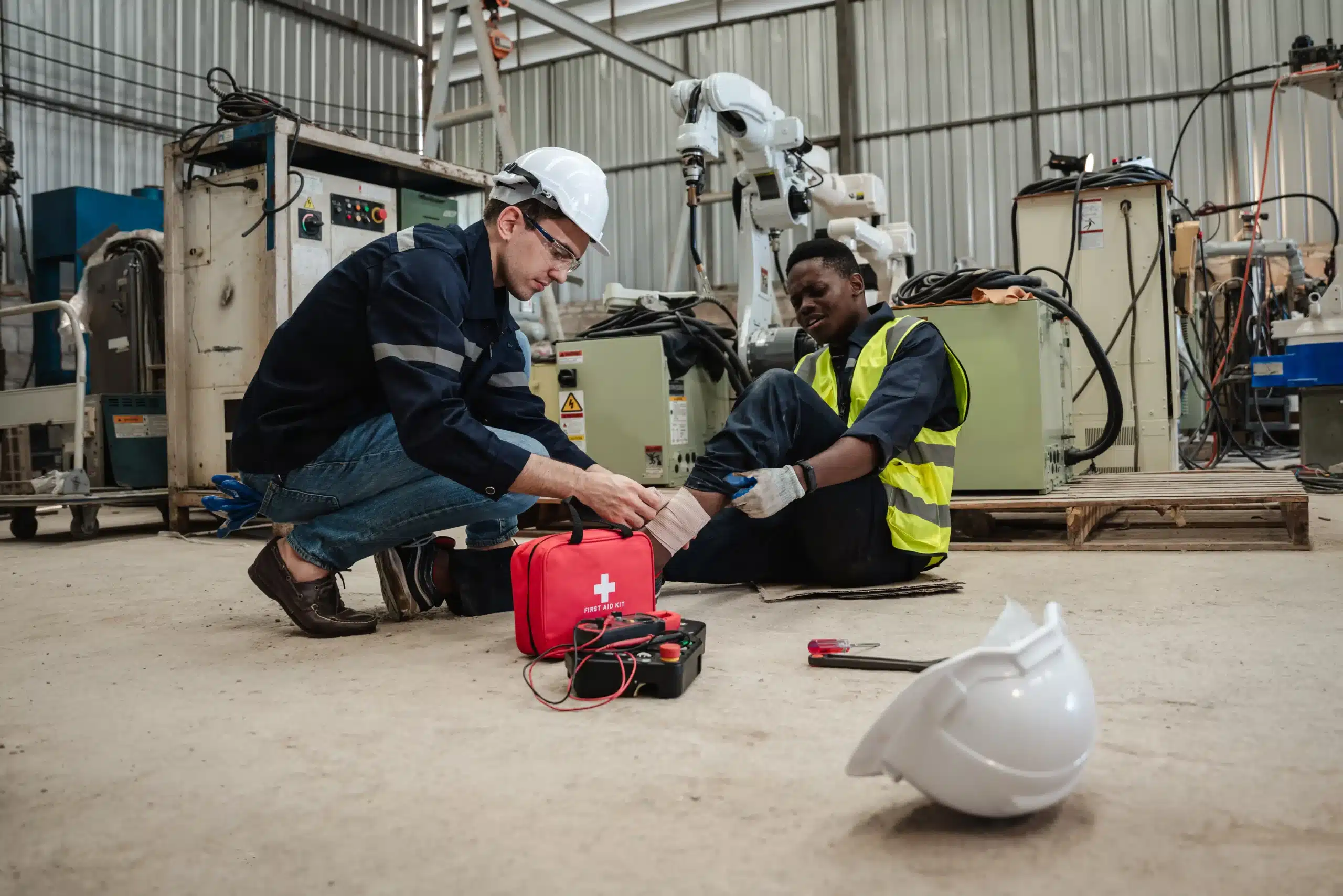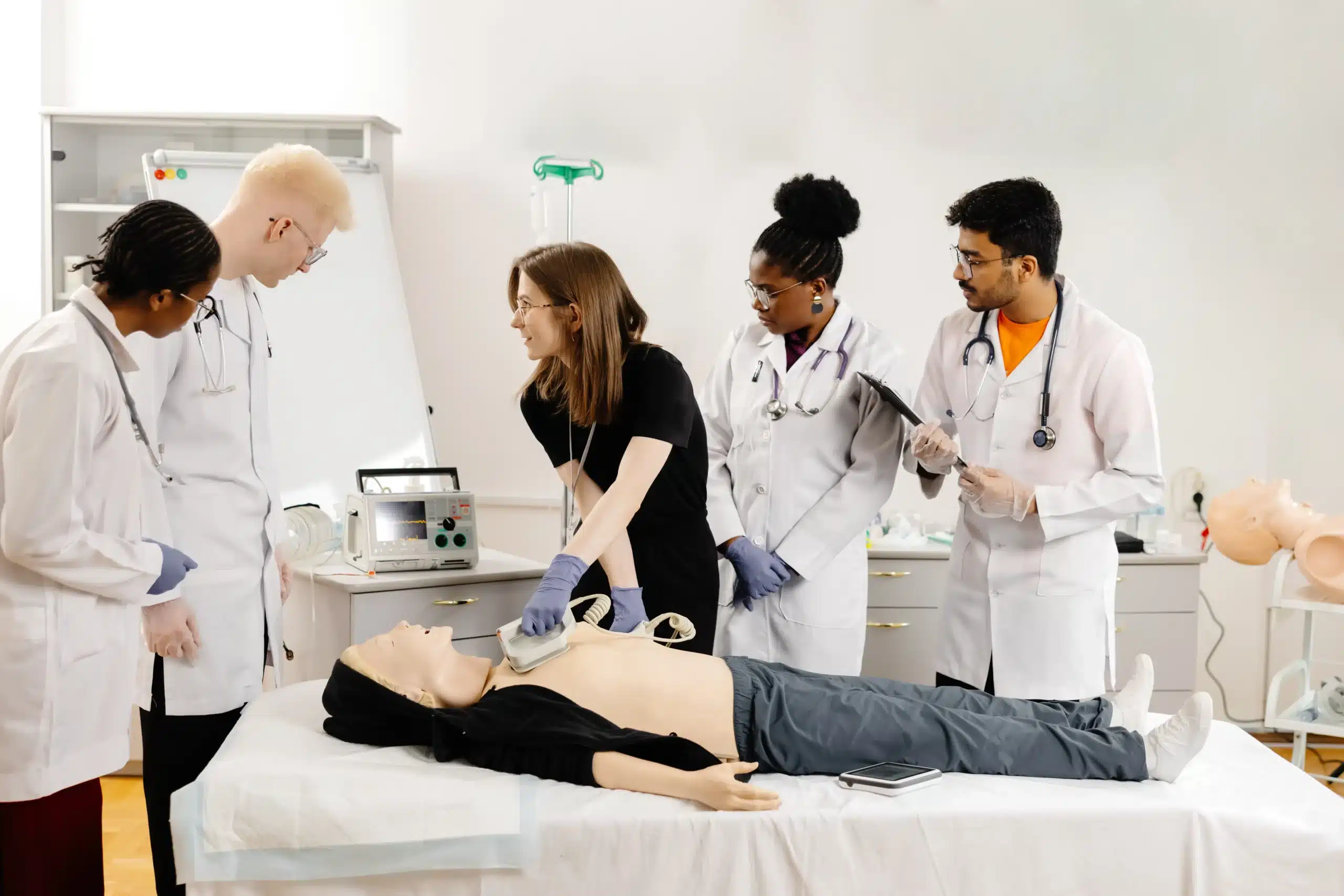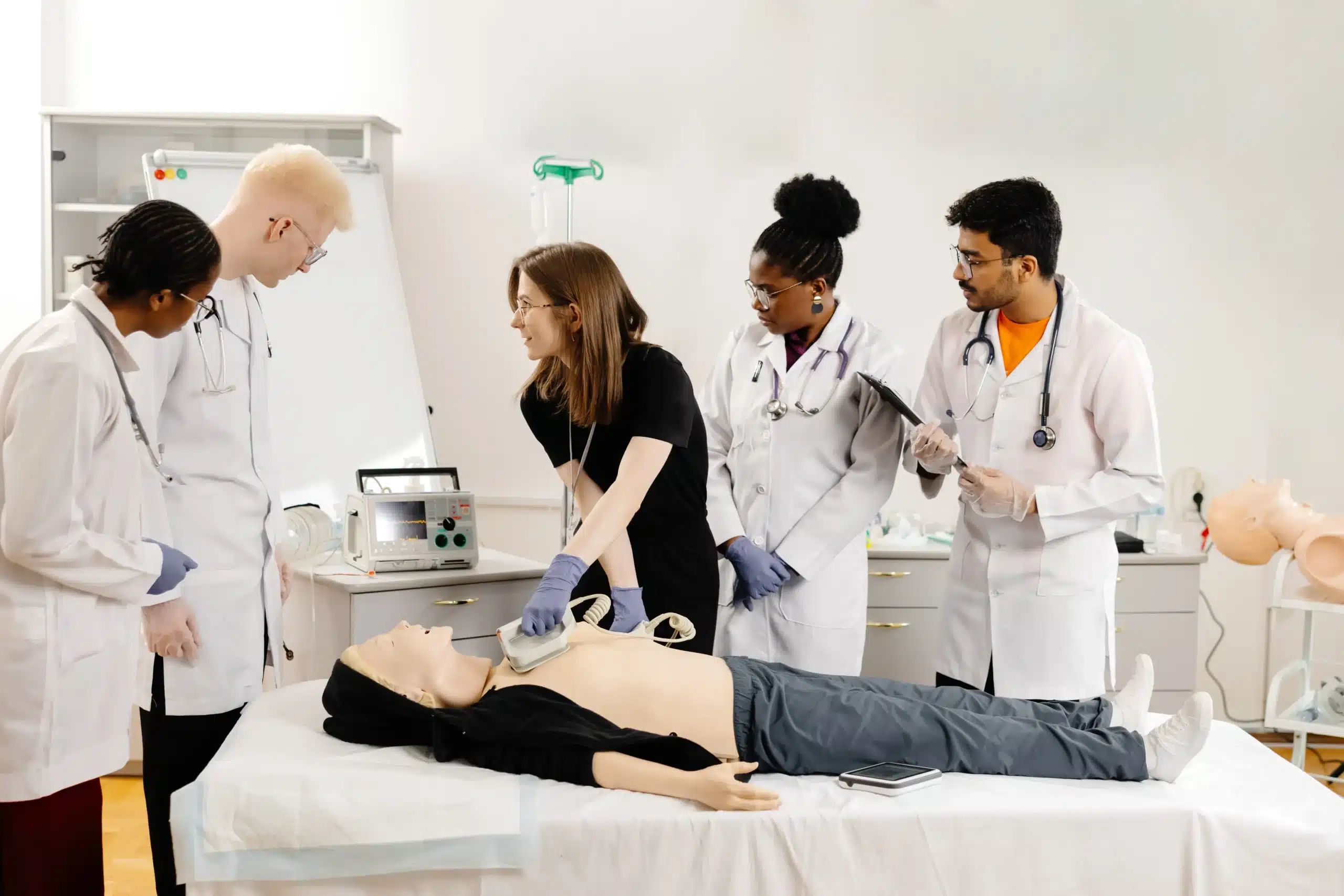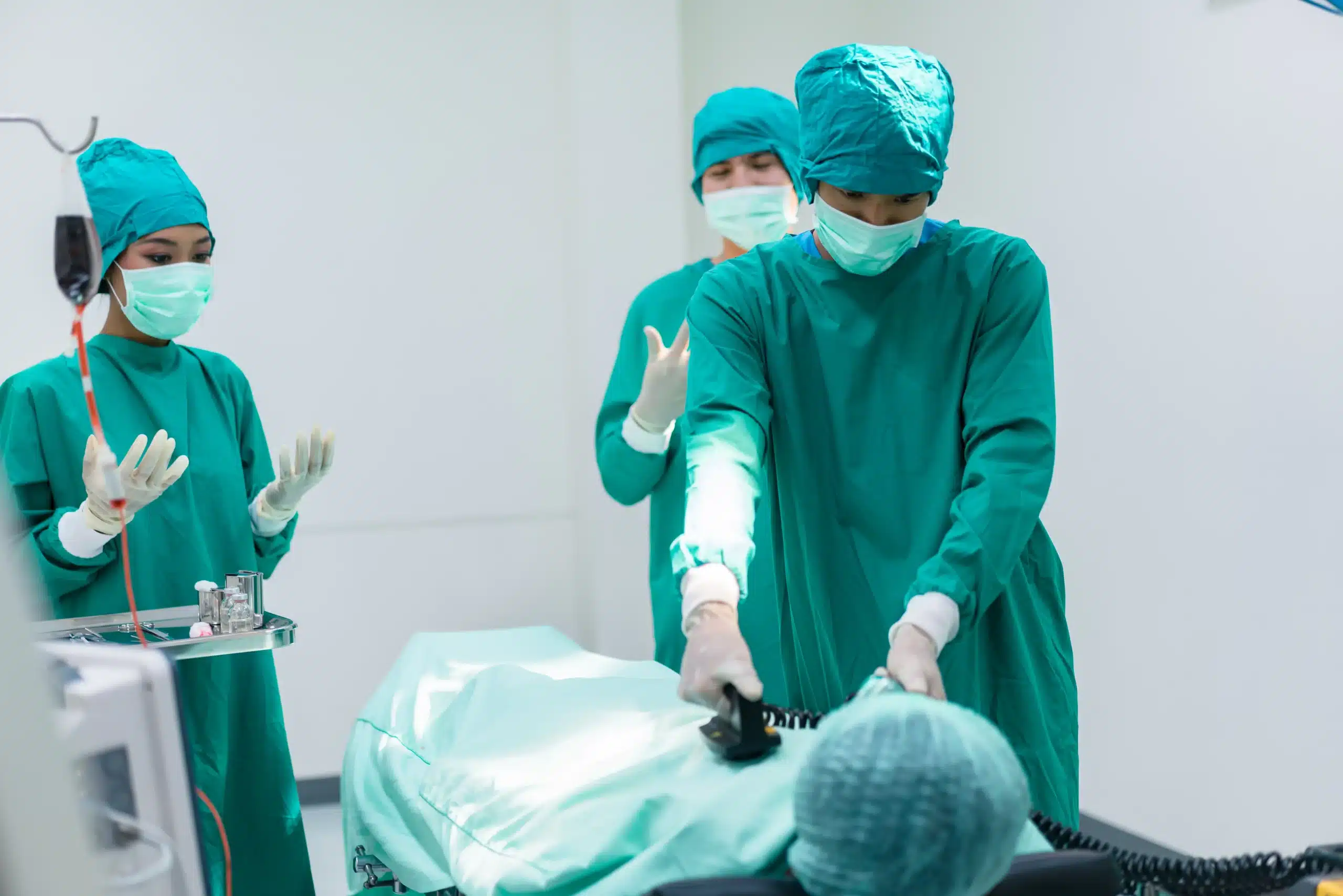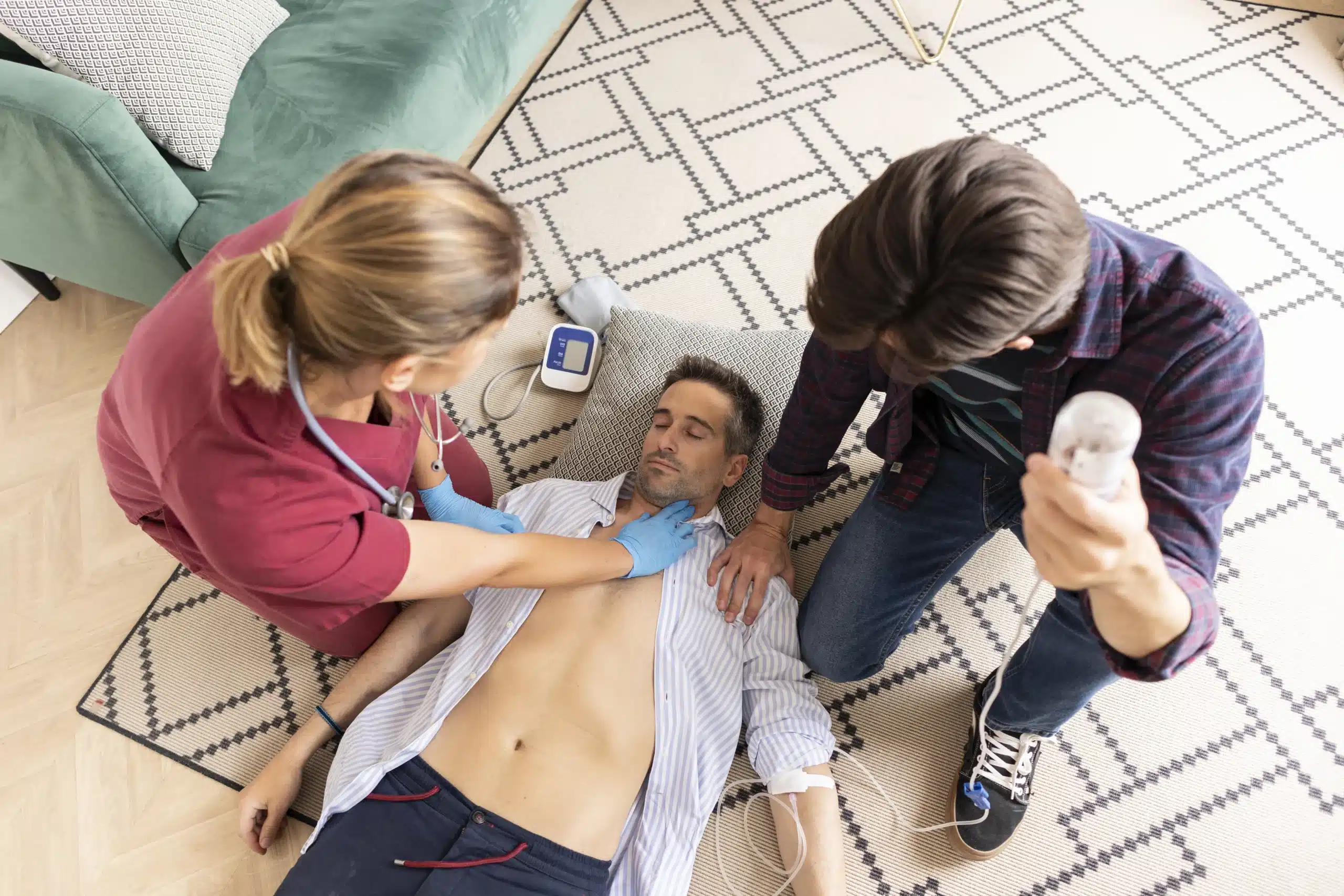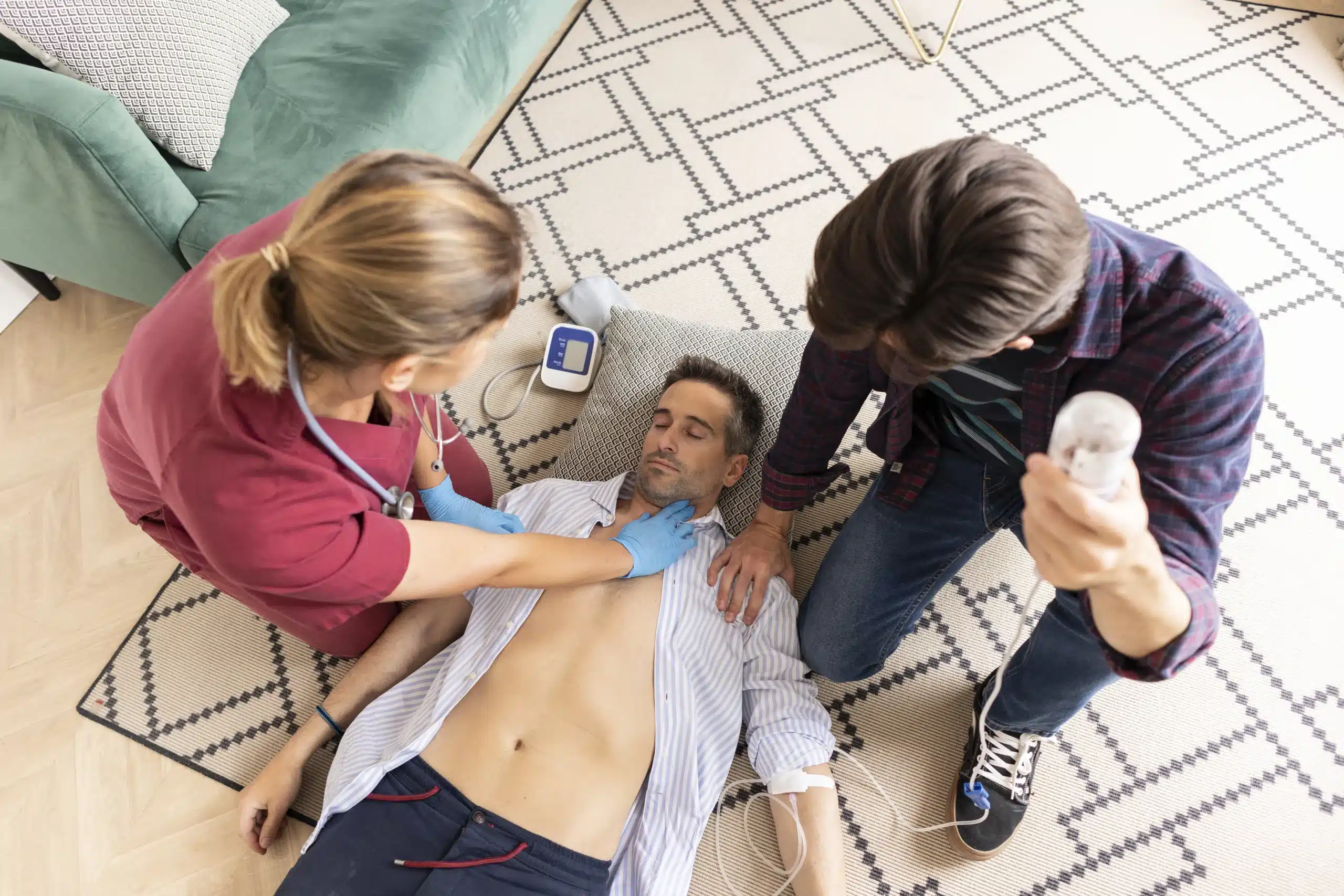We’ve all been there – that heart-stopping moment when someone needs immediate medical attention, and you’re not sure what to do. It’s a feeling of helplessness that can be incredibly frustrating. But what if you could be the person who steps up, takes charge, and provides essential care until professional help arrives? If the thought of searching for “first-aid classes near me” has crossed your mind, this guide is your starting point. We’ll break down the different types of first-aid courses, the skills you’ll learn, and how to find the right training program for your needs. We’ll also discuss the costs, the certification process, and the importance of staying up-to-date with the latest guidelines. Get ready to empower yourself with the life-saving skills of first aid.
Key Takeaways
- Be prepared for anything: First-aid training gives you the skills to handle medical emergencies, big or small. Find a class and become a resource for your community.
- Find the right fit: Think about what works best for you when choosing a class – online, in-person, or a mix of both. Look for reputable providers and certified instructors.
- Stay sharp: Keep your skills fresh with regular practice and recertification. Staying up-to-date ensures you can respond effectively when it matters most.
What are First-Aid Classes?
First-aid classes equip you with the skills to handle medical emergencies until professional help arrives. From minor injuries to life-threatening situations, these courses empower you to respond effectively and potentially save lives. Different types of first-aid classes cater to various needs and skill levels. Let’s explore some common categories:
CPR and AED Training
CPR (Cardiopulmonary Resuscitation) focuses on helping someone whose heart has stopped beating. Learning CPR involves understanding chest compressions and rescue breaths, techniques that help circulate oxygenated blood to vital organs. Often paired with CPR training is AED (Automated External Defibrillator) instruction. AEDs are portable devices that can analyze heart rhythms and deliver an electric shock to restore a normal heartbeat. Fairfield CPR Classes offers comprehensive CPR and First-Aid certification courses that cover these life-saving skills.
Basic First Aid
Basic first-aid courses teach you how to manage common injuries like cuts, burns, sprains, and fractures. You’ll learn essential skills such as controlling bleeding, applying bandages, and creating splints. These classes also cover recognizing and responding to medical emergencies like choking, strokes, and heart attacks. Basic first-aid training is invaluable for anyone, providing the confidence to handle everyday mishaps and potentially more serious events. For more detailed information on first aid in Fairfield, see our First Aid Fairfield Guide.
Advanced First Aid
Advanced first-aid courses, such as BLS (Basic Life Support), ACLS (Advanced Cardiovascular Life Support), and PALS (Pediatric Advanced Life Support), build upon basic first-aid knowledge. These courses are typically designed for healthcare providers and those in specialized roles. They delve into more complex medical scenarios and advanced life-saving techniques. Fairfield CPR Classes offers a range of these advanced courses, including our RQI program for healthcare professionals seeking to maintain and enhance their resuscitation skills. You can find more information about our advanced BLS, ACLS, and PALS courses on our website. We also offer a low price guarantee on all our courses.
Specialized Courses (e.g., Pediatric First Aid)
Specialized first-aid courses focus on specific populations or situations. For example, pediatric first aid teaches you how to respond to medical emergencies involving infants and children. Other specialized courses might address wilderness first aid, pet first aid, or occupational first aid. Fairfield CPR Classes offers specialized training like the EMSA Child Care Health & Safety program, which meets the requirements for licensed childcare providers in California. We also offer group discounts for these and other courses, making it easier for teams and organizations to receive comprehensive training. If you have questions or want to discuss your specific training needs, please contact us.
Find First-Aid Classes Near You
Finding a first-aid class that fits your schedule and learning style is easier than you think. Here are a few ways to discover training options in your area:
Search Online
Start with a simple online search. Type “first-aid classes near me” into your preferred search engine. This will generate a list of local providers, including established organizations like the American Red Cross and independent training centers. Many providers offer online registration, making it easy to compare schedules and pricing. You can also explore online course platforms that may offer first-aid certifications.
Check Local Organizations
Your local fire department, hospital, or community center may offer first-aid and CPR training. Organizations like the American Heart Association often partner with community groups to provide affordable or even free classes. Contacting these organizations directly can provide valuable insights into upcoming training sessions. For example, businesses like Healthline First Aid in Milwaukee partner with the AHA to offer various training courses.
Explore Community Centers and Schools
Community centers, recreation departments, and even some schools offer first-aid classes. These classes are often geared towards specific groups, such as parents, caregivers, or teachers. Check with your local community center or school district for information on available courses. The City of Everett, WA, for instance, offers free ACT First Aid & CPR training. Similarly, dedicated CPR training centers, such as those found through a search for “CPR classes in Fairfield,” offer various courses in specific locations. A quick search can connect you with providers like Fairfield CPR Classes that serve your specific region.
Choose the Right First-Aid Class
Finding the right first-aid class takes a little research, but it’s worth it to ensure you receive high-quality training. Here’s what to consider:
Accreditation and Certification
Look for classes offering certification from reputable organizations like the American Heart Association or the American Red Cross. This ensures the curriculum meets national standards, and your certification will be widely recognized. A provider with a solid reputation for delivering comprehensive and up-to-date first-aid training is key.
Class Duration and Frequency
First-aid courses vary in length, from a few hours for basic training to multi-day programs. Consider your schedule and learning style when selecting a class. Fairfield CPR Classes offers various schedules and course lengths. We also offer group discounts for groups.
Instructor Qualifications
Experienced, certified instructors are essential for effective learning. Check if instructors have relevant experience and expertise in first aid and emergency response. Our instructors at Fairfield CPR Classes are highly qualified and passionate about teaching. We also offer specialized training like our RQI program for healthcare professionals.
Evaluate Provider Reputation
Reading reviews and testimonials can give you a sense of other students’ experiences. A provider’s reputation reflects the quality of training they provide. Fairfield CPR Classes is a woman-owned AHA Training Center committed to excellent customer service. We encourage you to contact us with any questions. We also offer a low price guarantee.
How Much Does First-Aid Training Cost?
Knowing the cost of first-aid training is a practical first step. Let’s break down the typical expenses and explore ways to find the best value.
Average Price Ranges
First-aid training costs vary. Online courses often range from $20 to $50, offering a budget-friendly entry point. For in-person training in Fairfield, California, expect to pay between $50 and $100 for basic first-aid and CPR certification. More specialized training or advanced certifications will likely have higher price tags.
Factors Affecting Cost
Several factors influence the final cost. The type of training, for example, plays a significant role. A basic first-aid course will typically be less expensive than a more specialized course like wilderness first aid. The training provider also matters. Established organizations or those with premium facilities may charge more. Finally, the format—online versus in-person—can impact the price, with online courses often being the more affordable option. For the best value, check out Fairfield CPR Classes’ low-price guarantee.
Discounts and Free Options
Look for opportunities to save. Some providers, like Fairfield CPR Classes, offer group discounts, making it a cost-effective choice for workplaces or community groups. While some organizations may offer free training courses, they might charge a separate fee for official certification. Always clarify what’s included in the advertised price to avoid surprises. If you’re looking for CPR training in Fairfield, contact Fairfield CPR Classes to discuss options and learn about potential discounts.
Which Class Format Suits You?
Choosing the right first-aid class format depends on your learning style, schedule, and budget. Let’s break down the pros and cons of each option so you can make an informed decision.
In-Person Training Benefits
In-person classes offer hands-on learning, direct interaction with instructors, and immediate feedback. You’ll practice techniques on mannequins and with classmates, building muscle memory and confidence. This format is ideal for those who learn best in a traditional classroom setting and value face-to-face instruction. The hands-on practice is invaluable for mastering essential skills like CPR and bandaging. Plus, asking questions and getting clarification in real-time can solidify your understanding. For some, the structured environment of an in-person class helps maintain focus and encourages active participation. If you thrive in a collaborative learning environment, in-person training might be the perfect fit. Fairfield CPR Classes offers a variety of in-person courses to meet your needs.
Online Course Flexibility
Online first-aid courses provide unparalleled flexibility. You can learn at your own pace, anytime, anywhere, fitting the training around your busy schedule. This format often involves video lessons, interactive exercises, and online assessments. Online courses tend to be more budget-friendly, making them an attractive option for those with time constraints or who prefer self-directed learning. This format allows you to review materials as needed and tailor your study schedule to your individual preferences. However, keep in mind that online courses typically require an in-person skills session for hands-on practice and to receive your certification.
Blended Learning Advantages
Blended learning combines the best of both worlds. You’ll complete the theoretical portion of the course online, at your own pace, then attend a shorter in-person session to practice skills and demonstrate competency. This hybrid approach offers the flexibility of online learning with the benefit of in-person interaction and hands-on training. It’s a great option for those who want a convenient way to learn the material but also recognize the importance of practicing skills in a real-world setting. Blended learning can be a particularly effective way to learn first aid, allowing you to absorb information online and then apply it during the in-person skills session.
Online Training Myths
One common misconception about online first-aid training is that it’s less comprehensive than in-person training. This isn’t necessarily true. Reputable online courses, like those offered by the American Red Cross and the American Heart Association, cover the same essential material as in-person classes, ensuring you gain the knowledge and skills needed to respond effectively in an emergency. Another myth is that online certification isn’t valid. Again, this is often false. Look for online courses that offer certification from recognized organizations like the AHA or Red Cross to ensure your certification is widely accepted. Make sure to check whether the online portion fulfills all the requirements before registering for the in-person skills check.
What Happens in a First-Aid Class?
Curious about what goes on in a first-aid class? It’s a blend of learning essential life-saving skills and practicing how to use them effectively. Here’s a glimpse of what you can expect:
Typical Curriculum
First-aid classes cover a range of crucial topics to equip you for various emergency situations. You’ll learn the role and responsibilities of a first responder, understand how to assess a scene, and discover the steps to take for medical emergencies. This includes managing severe choking, recognizing and responding to heart attacks and strokes, and controlling external bleeding. You’ll also gain practical skills for handling injuries like broken bones and sprains, as well as how to deal with bites and stings. Courses like those offered by Fairfield CPR Classes align with guidelines from organizations like the American Heart Association, ensuring you receive high-quality instruction.
Hands-On Practice
Learning first aid isn’t just about memorizing facts—it’s about developing the confidence to act quickly and effectively under pressure. That’s why hands-on practice is such a vital part of any good first-aid class. You’ll participate in realistic scenarios and simulations, giving you the chance to apply your newfound knowledge and build muscle memory. This practical experience is invaluable in preparing you to respond confidently in a real emergency. The benefits of in-person training shine through in this aspect, allowing instructors to provide personalized feedback. Some courses also offer blended learning, combining online learning with in-person skills sessions.
Assessment and Certification
Most first-aid courses include an assessment to evaluate your understanding and skills. This typically involves both a written exam and practical demonstrations. Upon successful completion, you’ll receive first-aid certification, often valid for two years. This certification demonstrates your competence and can be valuable for personal or professional reasons. Maintaining your skills is key, so remember to renew your certification to stay up-to-date with the latest guidelines. Organizations like the American Heart Association offer more information on certification and recertification.
Why Learn First Aid?
Learning first aid is more than just a good idea—it’s an essential skill that can make a real difference in critical situations. Whether you’re at home, work, or out in your community, having first-aid knowledge empowers you to respond effectively to accidents and emergencies. Let’s explore some key reasons why you should consider getting trained.
Prepare Yourself
Accidents can happen anytime, anywhere. A study published in IOSR Journals highlights that injuries and accidents have become a major public health concern. First-aid training equips you with the skills and confidence to handle these unexpected events. Knowing how to assess a situation, control bleeding, manage a fracture, or administer CPR can be truly life-saving. It transforms you from a bystander into a potential first responder, ready to provide immediate assistance until professional help arrives. This preparedness not only helps those in need but also brings a sense of personal empowerment. Consider taking a CPR and First Aid class to be prepared.
Advance Your Career
In today’s competitive job market, first-aid certification can give you a real edge. Many employers see first-aid training as a valuable asset, demonstrating your commitment to safety and preparedness. This is particularly relevant for roles in healthcare, education, childcare, and other fields where safety is paramount. Adding this qualification to your resume can make you a more attractive candidate and potentially open doors to new opportunities. It shows initiative and a willingness to go the extra mile, qualities that employers highly value. Check with your employer to see if they offer group discounts for first aid training.
Contribute to Community Safety
Learning first aid isn’t just about individual preparedness; it’s about building safer communities. When more people are equipped with these skills, we create a network of potential lifesavers. Articles published by the World Health Network emphasize how CPR and first-aid education contributes to overall community safety. By getting trained, you become a valuable resource for your family, friends, neighbors, and colleagues. You can be the person who steps up during an emergency, providing critical assistance and potentially making a profound impact on someone’s life. If you are a healthcare provider, consider taking an RQI class to maintain your skills and contribute to a safer community. Contact us today to learn more about our classes.
Maintain Your First-Aid Skills
Once you’ve learned first aid, commit to keeping your skills fresh. It’s not a one-and-done deal. Regularly reviewing and practicing can make a real difference when you need to act quickly. This section covers how to stay up-to-date and confident in your abilities.
Recertification Requirements
Most first-aid certifications, like those from the American Heart Association, are valid for about two years. Check your certificate or the certifying organization’s website for specific recertification requirements. Renewing your certification ensures you’re current on the latest first-aid practices and protocols, which can change as new research emerges. Don’t let your skills lapse—stay current to provide effective care in an emergency. Fairfield CPR Classes offers a variety of recertification courses to help you maintain your qualifications.
Practice and Refresher Courses
Even if your certification is still valid, regular practice is key to maintaining proficiency. Consider taking refresher courses or practicing with friends and family. Hands-on experience is invaluable for mastering first-aid skills. In-person first-aid courses offer the best opportunity for this type of practice, allowing you to work through realistic scenarios and receive instructor feedback. You’ll learn to handle medical emergencies like choking, heart attacks, and strokes, as well as injuries like bleeding, broken bones, and bites. Regular practice builds muscle memory and confidence, so you can react effectively in a stressful situation. Check out Fairfield CPR Classes for upcoming refresher courses and practice sessions. They offer a range of programs, including blended learning options that combine online learning with hands-on practice.
First-Aid Training Providers in Fairfield, CA
Finding the right first-aid training can feel overwhelming, but plenty of reputable providers offer classes. Here’s a rundown of some well-known organizations and what they offer, focusing on options in and around Fairfield, CA:
Fairfield CPR Classes
Fairfield CPR Classes offers a range of American Heart Association (AHA) courses, including CPR/First Aid, BLS, ACLS, PALS, and more. They emphasize hands-on training, building your confidence to respond effectively in emergencies. They also offer group discounts and a low-price guarantee. If you’re in Fairfield, Vacaville, or Suisun City, check out their convenient CPR and first-aid certification courses. Contact them directly for more information.
American Red Cross
The American Red Cross is a trusted name in emergency preparedness, offering various courses from standard first aid and CPR to specialized certifications. With online, in-person, and blended learning formats, they make fitting training into your schedule easier. Find a Red Cross class near you.
American Heart Association
While the AHA doesn’t directly teach classes, they set the standards for CPR and emergency cardiovascular care. Several organizations, such as Safety Training Seminars, offer AHA-certified courses in Fairfield, often including BLS, ACLS, and PALS certifications—essential for healthcare providers.
National Safety Council
The National Safety Council is another reputable provider of first-aid and CPR training, with programs designed for various settings, including workplaces and community groups. Find a National Safety Council course that fits your needs.
St. John Ambulance
Primarily serving Canada, St. John Ambulance is a respected international organization known for its first-aid training. If you’re looking for internationally recognized certification or happen to be in Canada, explore their range of first-aid courses for different skill levels.
Related Articles
- CPR Classes in Fairfield: Find the Right Course – Fairfield CPR Classes
- First-Aid Certification Courses in Vacaville, CA – Fairfield CPR Classes
- Advanced Cardiac Life Support (ACLS) in Fairfield – Fairfield CPR Classes
- First Aid Training in Fairfield: Your Guide – Fairfield CPR Classes
- Find BLS Training Near Me: A Practical Guide – Fairfield CPR Classes
Frequently Asked Questions
Why is first-aid training important? First-aid training empowers you to respond effectively in emergencies, potentially saving lives. It equips you with the skills to handle injuries and medical situations until professional help arrives, offering confidence and preparedness for unexpected events. This knowledge can make a difference at home, at work, or in your community.
How do I choose the right first-aid class? Consider factors like accreditation, class duration, instructor qualifications, and provider reputation. Look for certification from reputable organizations like the American Heart Association or the American Red Cross. Choose a class length and format (online, in-person, or blended) that suits your learning style and schedule. Research the provider’s reputation and instructor experience to ensure quality training.
What are the different types of first-aid courses available? First-aid courses range from basic to advanced levels. Basic courses cover common injuries and emergencies. Advanced courses, like BLS, ACLS, and PALS, cater to healthcare providers and delve into more complex medical scenarios. Specialized courses focus on specific populations (pediatric first aid) or situations (wilderness first aid).
How much does first-aid training typically cost? Costs vary depending on the course type, provider, and format. Online courses are generally more affordable, while in-person and specialized training tend to be more expensive. Look for potential discounts, such as group rates or offers from local organizations.
How can I maintain my first-aid skills after completing a course? Regular practice and recertification are key. Most certifications are valid for two years. Stay updated on the latest guidelines and techniques by taking refresher courses or practicing with friends and family. Hands-on practice is crucial for maintaining proficiency and confidence in your abilities.
